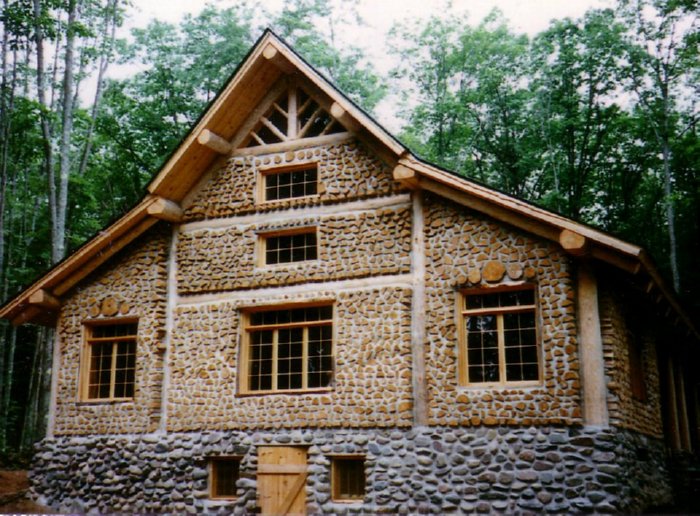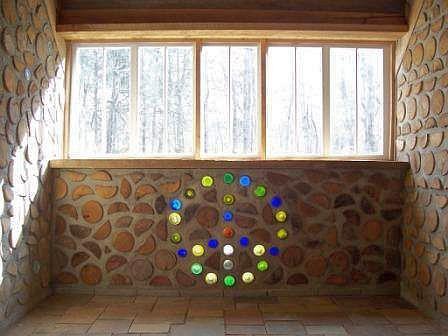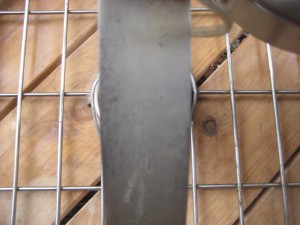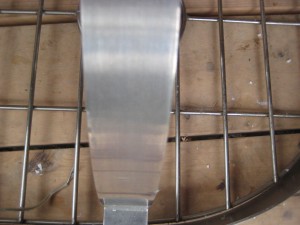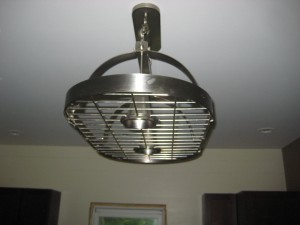Do you have a wooded property or easy access to cord wood? If so, then you might want to check out the Cordwood Masonry Method for building a green home, office, spa, chicken coop – or whatever else you’re building!
It’s difficult to pinpoint who “invented” the cordwood style of building. Also known as cordwood masonry, stackwood construction, and stackwall construction, this style of building has been found as far back as 1,000 years ago in portions of Greece and Syberia.
Cordwood is a very easy, affordable and, depending on where you live, very green method of building a structure. It can be as simple or as elaborate as you’d like, and the style offers a look of natural beauty all it’s own once complete.
This unique building style involves stacking pieces of cord wood, also known as fire wood, as you would bricks, using mortar in between them to seal up the holes and gaps around the logs. Wherever you can manage to get your own logs, you can build a very eco friendly, natural home with the help of this green building technique.
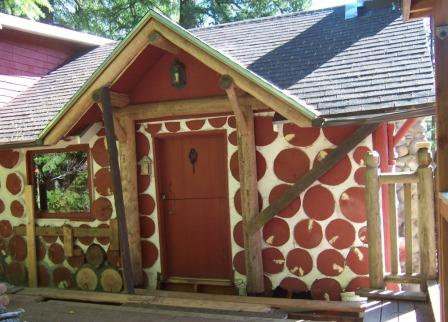
For example, in the United States, Cordwood Masonry became popular in places like Wisconsin, Vermont, and Upstate New York during the Depression because these areas are heavily wooded. Generally, you need to clear the trees for your home in these locations. As a result, it becomes quite economical when you can use the same trees you’re cutting for your home site anyway as the building materials for your actual structure.
You do need some time to season your wood which requires planning and preparation, but, in many situations, time is far cheaper than materials costs. You’ll also need to buy the ingredients for your mortar.
Speaking of which – Experts differ on the exact amounts and combinations of ingredients to use for cordwood mortar, but most recommend a mixture of sand, lime, portland cement, and soaked saw dust. This is all mixed by hand and applied between each log.
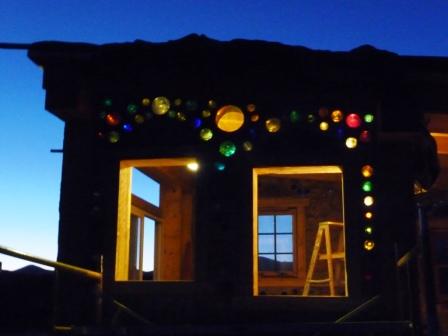
When done correctly these walls offer and exceptional R value and their thermal mass (or ability to absorb heat and slowly radiate it back to the surrounding space) is fantastic. They also look really really cool inside and out! Many even incorporate recycled glass bottles, stones, or unique wood ends to add even more style to their finished project.
Want to learn more about cordwood masonry? There are many wonderful books and even classes you can go to in order to learn more about this building style. Even novice builders can excel at building their own cordwoood building, but, they should complete a few practice projects first in order to hone their construction skills before delving into a large structure. To help this along there are also places that facilitate building parties/classes in which participants help build a host’s home. You get the benefit of experience and they get help with their home.
However you do it, if you have the right property and the right project, cordwood masonry is a green building style that will help you build an earth friendly, natural home or other structure easily.

